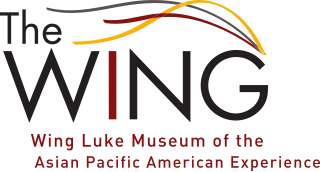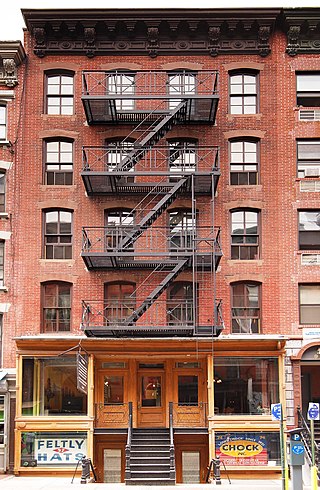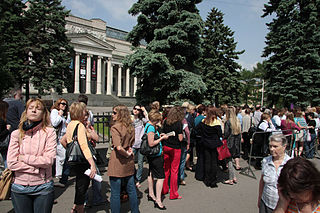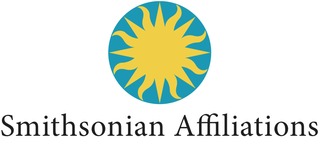
A museum is a building or institution that cares for and displays a collection of artifacts and other objects of artistic, cultural, historical, or scientific importance. Many public museums make these items available for public viewing through exhibits that may be permanent or temporary. The largest museums are located in major cities throughout the world, while thousands of local museums exist in smaller cities, towns, and rural areas. Museums have varying aims, ranging from the conservation and documentation of their collection, serving researchers and specialists, to catering to the general public. The goal of serving researchers is not only scientific, but intended to serve the general public.

A curator is a manager or overseer. When working with cultural organizations, a curator is typically a "collections curator" or an "exhibitions curator", and has multifaceted tasks dependent on the particular institution and its mission. In recent years the role of curator has evolved alongside the changing role of museums, and the term "curator" may designate the head of any given division. More recently, new kinds of curators have started to emerge: "community curators", "literary curators", "digital curators" and "biocurators".

Museology or museum studies is the study of museums. It explores the history of museums and their role in society, as well as the activities they engage in, including curating, preservation, public programming, and education.

The Wing Luke Museum of the Asian Pacific American Experience is a history museum in Seattle, Washington, United States, which focuses on the culture, art and history of Asian Pacific Americans. It is located in the city's Chinatown-International District. Established in 1967, the museum is a Smithsonian Institution affiliate and the only pan-Asian Pacific American community-based museum in the country. It has relocated twice since its founding, most recently to the East Kong Yick Building in 2008. In February 2013 it was recognized as one of two dozen affiliated areas of the U.S. National Park Service.

The National Civil Rights Museum is a complex of museums and historic buildings in Memphis, Tennessee; its exhibits trace the history of the civil rights movement in the United States from the 17th century to the present. The museum is built around the former Lorraine Motel, which was the site of the assassination of Martin Luther King Jr. in 1968; King died at St. Joseph's Hospital. Two other buildings and their adjacent property, also connected with the King assassination, have been acquired as part of the museum complex.
Digital storytelling is a short form of digital media production that allows everyday people to create and share their stories online. The method is frequently used in schools, museums, libraries, social work and health settings, and communities. They are thought to have educational, democratizing and even therapeutic effects.

The Lower East Side Tenement Museum, located at 97 and 103 Orchard Street in the Lower East Side neighborhood of Manhattan, New York City, is a National Historic Site. The museum's two historical tenement buildings were home to an estimated 15,000 people, from over 20 nations, between 1863 and 2011. The museum, which includes a visitors' center, promotes tolerance and historical perspective on the immigrant experience.

The New Jersey Digital Highway (NJDH) is a collaborative initiative led by cultural heritage institutions—including libraries, museums, archives, state agencies and other organizations—in New Jersey to provide online access to cultural and historical information about the state. The main participating institutions include Rutgers University Libraries, the New Jersey State Library, the New Jersey Department of Archives and Records Management, the Pietro and Maria Botto House, and the New Jersey Historical Society, with other institutions around the state providing additional collections.

A historic house museum is a house of historic significance that has been transformed into a museum. Historic furnishings may be displayed in a way that reflects their original placement and usage in a home. Historic house museums are held to a variety of standards, including those of the International Council of Museums. Houses are transformed into museums for a number of different reasons. For example, the homes of famous writers are frequently turned into writer's home museums to support literary tourism.
Public humanities is the work of engaging diverse publics in reflecting on heritage, traditions, and history, and the relevance of the humanities to the current conditions of civic and cultural life. Public humanities is often practiced within federal, state, nonprofit and community-based cultural organizations that engage people in conversations, facilitate and present lectures, exhibitions, performances and other programs for the general public on topics such as history, philosophy, popular culture and the arts. Public Humanities also exists within universities, as a collaborative enterprise between communities and faculty, staff, and students.

International Museum Day (IMD) is an international day held annually on or around 18 May, coordinated by the International Council of Museums (ICOM). The event highlights a specific theme which changes every year reflecting a relevant theme or issue facing museums internationally. IMD provides the opportunity for museum professionals to meet the public and alert them as to the challenges that museums face, and raise public awareness on the role museums play in the development of society. It also promotes dialogue between museum professionals.

A special library is a library that provides specialized information resources on a particular subject, serves a specialized and limited clientele, and delivers specialized services to that clientele. Special libraries include corporate libraries, government libraries, law libraries, medical libraries, museum libraries, news libraries. Special libraries also exist within academic institutions. These libraries are included as special libraries because they are often funded separately from the rest of the university and they serve a targeted group of users.
Content creation is the contribution of information to any media and most especially to digital media for an end-user/audience in specific contexts. Content is "something that is to be expressed through some medium, as speech, writing or any of various arts" for self-expression, distribution, marketing and/or publication. Typical forms of content creation include maintaining and updating web sites, blogging, article writing, photography, videography, online commentary, the maintenance of social media accounts, and editing and distribution of digital media. A Pew survey described content creation as the creation of "the material, people contribute to the online world."

Men and women use social network services (SNSs) differently and with different frequencies. In general, several researchers have found that women tend to use SNSs more than men and for different and more social purposes.
The South Asian American Digital Archive (SAADA) is a 501(c)(3) not-for-profit organization that archives materials associated with the history of South Asian Americans.
"If This House Could Talk", is a community based history and public art project, first created and produced by residents of the Cambridgeport section of Cambridge, Massachusetts. Projects of a similar nature and with the same name take place annually in neighborhoods of Sacramento, California, Newburyport, Massachusetts, and other communities in the United States.

The House of European History (HEH) is a history museum and cultural institution in Brussels, Belgium, focusing on the history of Europe. It is an initiative by the European Parliament, and was proposed in 2007 by the Parliament's then-president, Hans-Gert Pöttering; it opened on 6 May 2017.
The Pew Center for Arts & Heritage is a nonprofit grantmaking organization and knowledge-sharing hub for arts and culture in Philadelphia, Pennsylvania, US established in 2005. In 2008, Paula Marincola was named the first executive director. The Center receives funding from The Pew Charitable Trusts and makes project grants in two areas, Performance and Exhibitions & Public Interpretation, as well as awarding grants to individual artists through Pew Fellowships. In 2021, the Center announced the introduction of Re:imagining Recovery grants to assist in COVID-19 recovery.

Smithsonian Affiliations is a division of the Smithsonian Institution that establishes long-term partnerships with non-Smithsonian museums and educational and cultural organizations, in order to share collections, exhibitions and educational strategies and conduct joint research.
A community museum is a museum serving as an exhibition and gathering space for specific identity groups or geographic areas.













